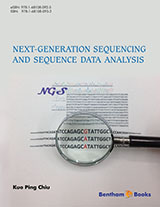Abstract
SHS investigation development is considered from the geographical and historical viewpoint. 3 stages are described. Within Stage 1 the work was carried out in the Department of the Institute of Chemical Physics in Chernogolovka where the scientific discovery had been made. At Stage 2 the interest to SHS arose in different cities and towns of the former USSR. Within Stage 3 SHS entered the international scene. Now SHS processes and products are being studied in more than 50 countries.
Abstract
Information regarding the distance between paired reads enhances the accuracy of genome assembly and sequence-to-genome mapping, making paired-end indispensable strategies for DNA sequencing. The most commonly used paired-end sequencing strategies are Paired-End (PE) sequencing and Paired-End Ditag (PED) sequencing. Similarity in terminologies frequently causes confusion. This chapter is set out to clarify these terminologies and then, using PED as an example, to illustrate how a biotechnology can be sequentially developed.
Keywords:
bPED, ChIP-EM, ChIP-HM, ChIP-TFBS, in situ PCR, mbPED, PE sequencing, PED sequencing.
Recommended Chapters
We recommend

Authors:Bentham Science Books






